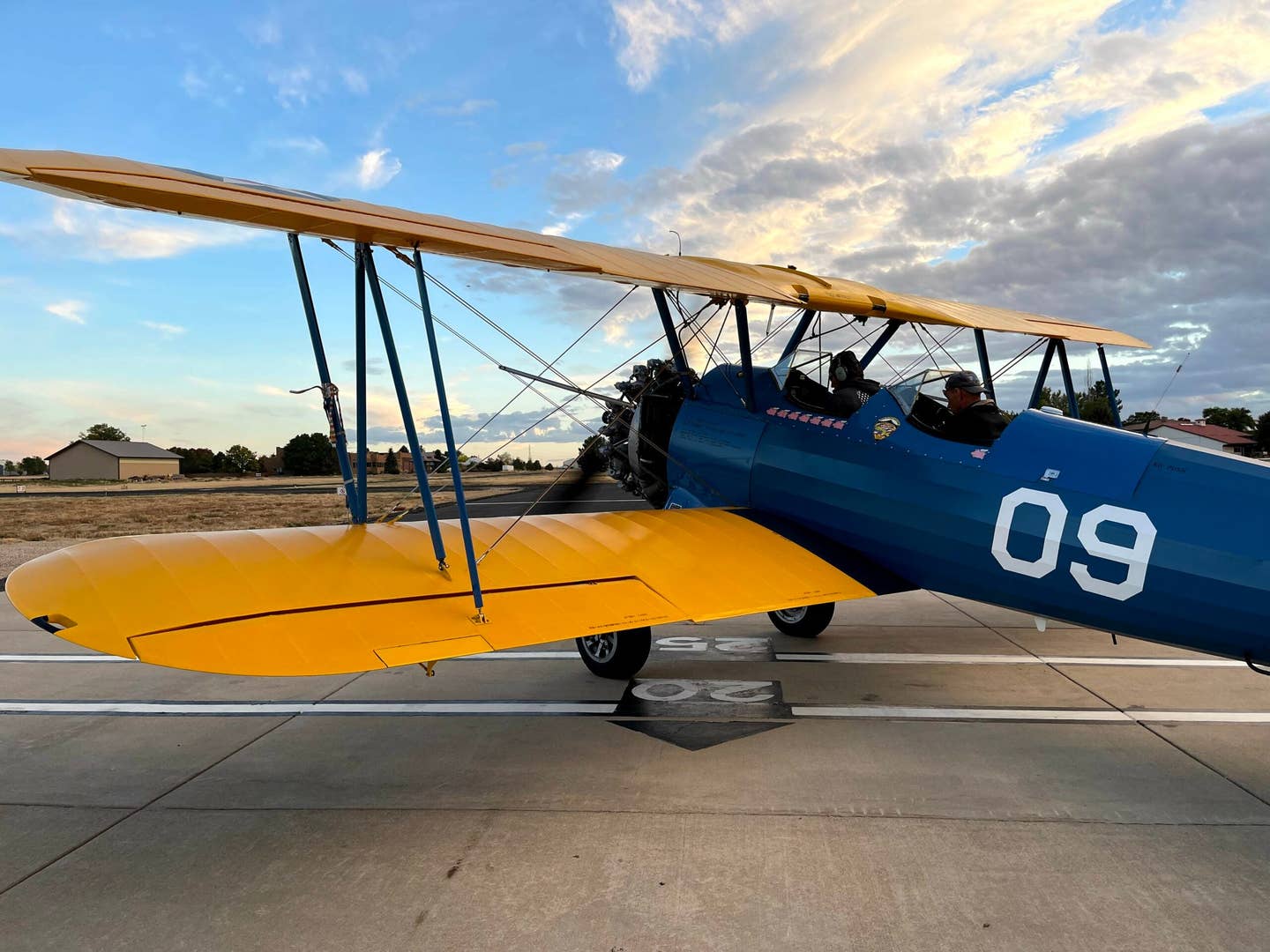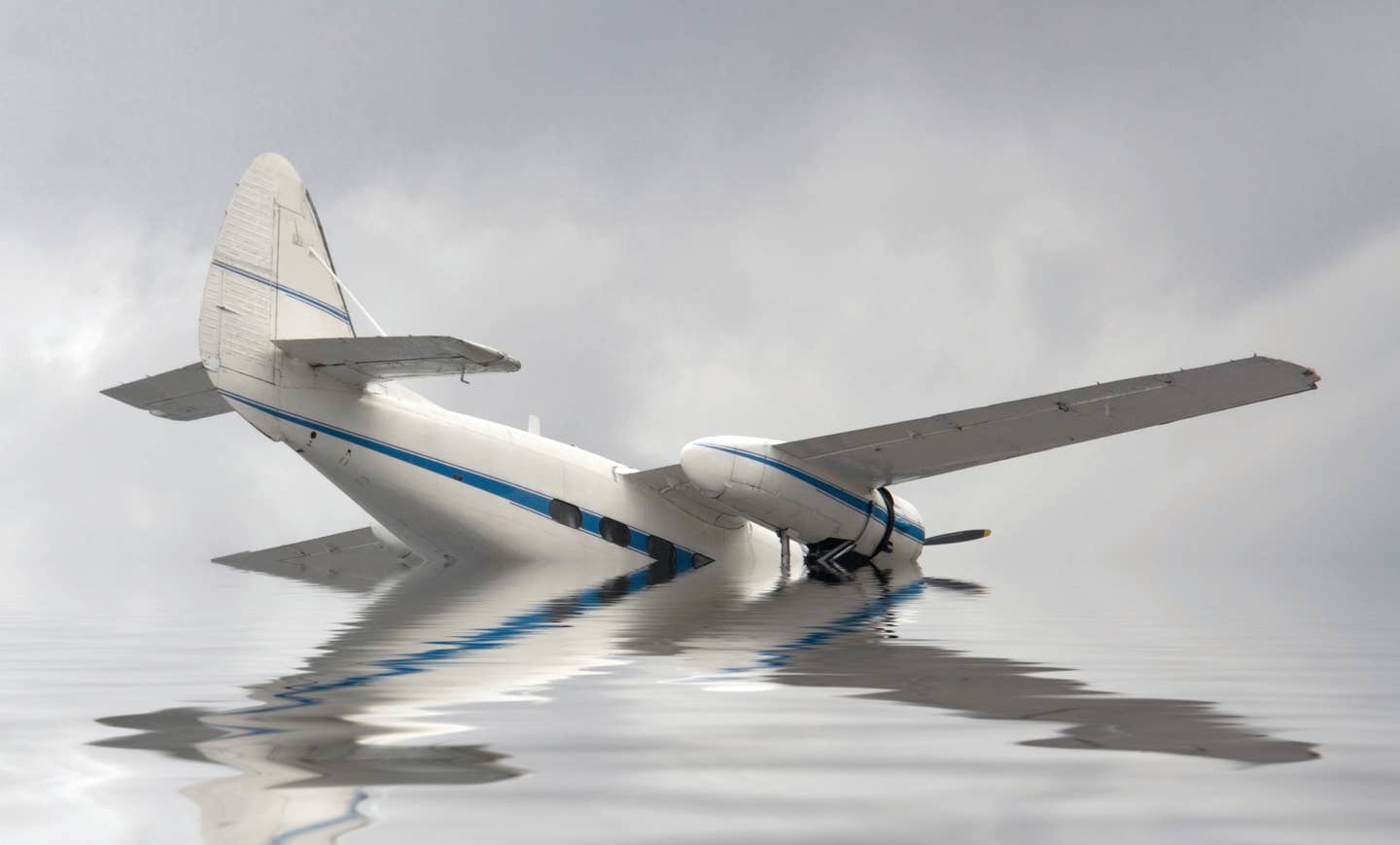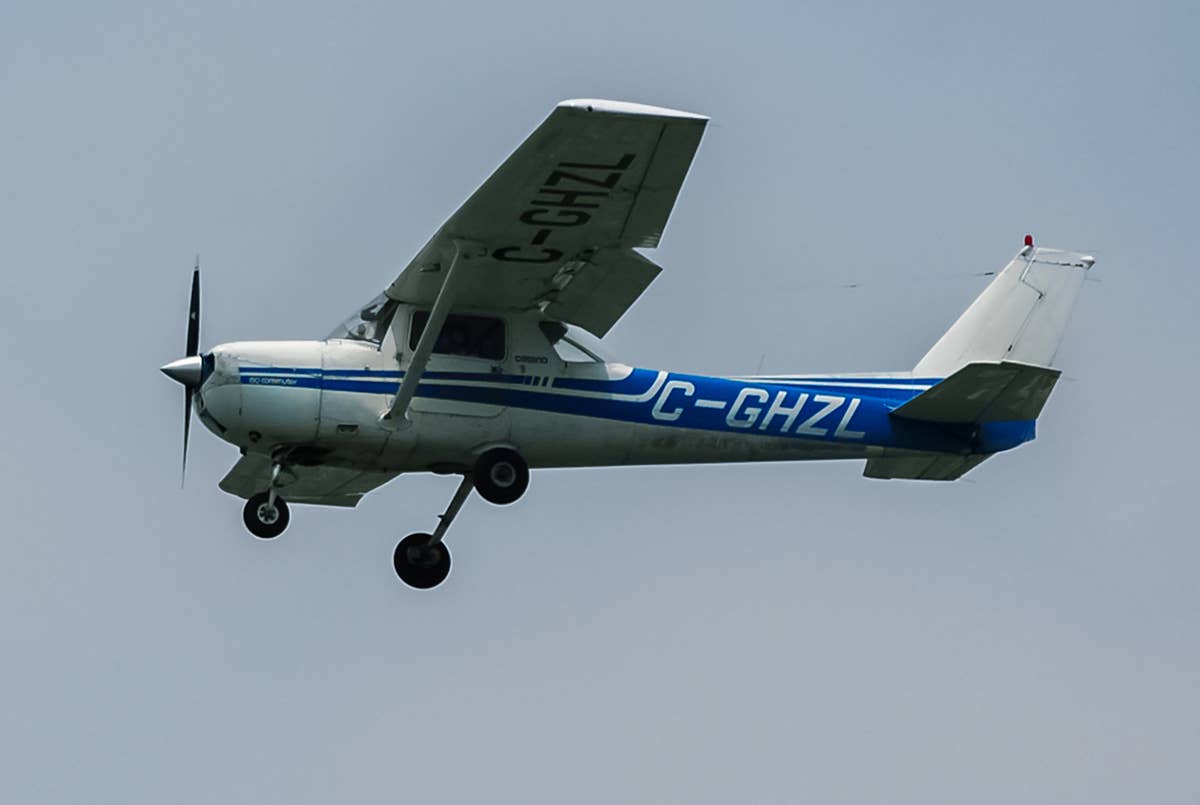Flying Through the Center of a Trough Should Have Been Uneventful
A combination of weather and decision-making leads to a flight narrative worth sharing.

FLYING contributor Scott Dennstaedt says he learned some valuable lessons on a memorable 2006 flight from the right-hand seat. [iStock]
Over the last 25 years, I have been asked to speak on various aviation weather topics at dozens of aviation events and gatherings.
During these events, it’s quite common for a pilot to walk up and ask me about how I handled my most challenging flight as it relates to weather. Maybe they were expecting to hear something juicy; I don’t know. While I don’t want to disappoint them about a harrowing recount of one of my prior flights, my response is usually the same. I don’t have such a story since I am always diligent about minimizing my exposure to adverse weather when I am the pilot in command (PIC).
If you're not already a subscriber, what are you waiting for? Subscribe today to get the issue as soon as it is released in either Print or Digital formats.
Subscribe NowHowever, I do have one story that is worth telling. I was not PIC, nor acting as an authorized instructor. I was sitting in the right seat as a passenger hitching a ride home from one of my speaking engagements.
Columbia Flying
In November 2006, a group of Columbia aircraft owners was having a gathering in northern New Jersey and extended an invitation for me to speak to it. I had moved from Baltimore to Charlotte, North Carolina, a few months earlier and didn’t have access to an aircraft. Fortunately, one of the owners attending the event was based in South Carolina and offered to swing by and give me a ride. Sweet.
The 3.5-hour flight in a Columbia 400 from Rock Hill/York County Airport (KUZA) in South Carolina, just south of Charlotte, to Lincoln Park Airport (N07) in northern New Jersey was uneventful with outstanding weather and smooth air ahead of an approaching weather system. My presentation later that afternoon went extremely well. After a good night’s rest, the plan was to fly back to Charlotte the following day with the same pilot who flew me to the event. I knew the weather wasn’t going to be as amenable as it was on the inbound flight.
It wasn’t the storm of the century or even in the top 10,000, but it was a significant event from a four-seat piston pilot’s perspective. Spoiler alert—we didn’t get into severe icing, and we didn’t stumble into a thunderstorm. But we did find ourselves in very challenging weather that was totally avoidable on this return flight.
The weather at Lincoln Park wasn’t spectacular. The pilot had two general route choices, namely, take an “eastern” route along the Mid-Atlantic coast through Delaware and eastern Virginia, or a “western” route around the west side of the Washington, D.C., airspace. While we were sitting in the airplane on the morning of the flight, the pilot received his IFR clearance, which kept us on the eastern route.
Which Route to Choose?
Knowing the weather that was expected to occur along the coastal Mid-Atlantic region, an eastern route was not at the top of my list of preferred routes. New York clearance delivery would not give us a southwestern departure because of heavy flow in and out of the congested New York airports.
After a brief back-and-forth discussion with clearance delivery, a route directly south was the option the pilot accepted. Without getting into the details of why the eastern route was chosen, here is a synopsis of the flight and what we experienced.
We planned to leave around 8 a.m. (13Z). I spent an hour looking at the weather before we departed. It was obvious from looking at the surface analysis loop that several “weak” low pressure centers situated along a front oriented north and south along the coast of the eastern U.S. were merging into a single area of low pressure in eastern North Carolina. This is quite common for the middle of November as nor’easters become commonplace and strengthen in the warmer waters off the Mid-Atlantic coast.
- READ MORE: Here’s the Lowdown on ‘Vertical Visibility’
The center of the developing upper-level trough (low) was just passing over the mountains and organizing while moving east over the Piedmont of North Carolina. The trough was forecast to become negative tilted and strengthen into a potent weather system. It is always best to fly on the west side (upwind) of the trough axis, where conditions improve with upper-level flow becoming anti-cyclonic.
Being on the east side (downwind) of the trough axis isn’t the optimal place to fly given cyclonic upper-level flow and the likelihood of adverse weather, especially with a trough flexing its muscles with a slight negative tilt. A negative tilt allows for warmer unstable air in the lower atmosphere to undercut cold air aloft, creating convective instability.
Based on the Storm Prediction Center (SPC) enhanced resolution thunderstorm outlook, the convective potential hugged the east coast of the Mid-Atlantic states to include Delaware, New Jersey, eastern Maryland, and eastern Virginia.
The forecast radar demonstrated the potential for moderate to heavy rainfall moving into the eastern Virginia region with heavier cells expected in eastern North Carolina at 15Z. Along with several other forecasts not shown here, this made me believe that a route around the west side of Washington would provide the least exposure to adverse weather, especially as it relates to convective turbulence.
Enter the Freezing Level
Normally heading south, the height of the freezing level will increase. At least that’s what you were likely taught to expect. On the contrary, the freezing level was actually higher (~12,000 feet) in northern New Jersey than it was along the coast of South Carolina (~8,000 feet).
The height of the 500 mb constant pressure surface has a relationship to the temperature of the air below it. Although the height of the 500 mb surface varies with temperature, it’s roughly 18,000 feet msl for reference. As a result, the freezing level will generally be lower near the center of the trough as air molecules compact owing to the colder temperature. With minimum en route altitudes around 6,000 feet, a route to the west of Washington would keep us a comfortable distance away from the convective weather, and we’d likely be flying in VFR conditions.
After departing Lincoln Park headed south, we topped the stratus deck at 3,500 feet. The ride was smooth as we climbed to our cruise altitude at 12,000 feet. We continued along the eastern route and in southeastern New Jersey deviated a bit to the left around a couple healthy buildups. We were right at the freezing level, so there wasn’t a need to risk airframe ice, especially since this aircraft did not have any ice protection other than pitot heat.
Over the Delmarva Peninsula there was a wall of clouds staring us down in the distance. These clouds looked nasty with substantial vertical development—yes, we were headed directly into the center of this trough. The pilot nonchalantly asked me (the CFI and meteorologist) if we could climb on top. Knowing how deep these weather systems can be, and the fact that we’d be climbing for quite a while into a temperature regime that’s perfect for accreting airframe ice, I gave the thumbs-down on that plan.
I looked over and noticed that the static air temperature was now a couple degrees below freezing as we drew closer to the center of this developing trough. As we entered the clouds, clear ice began to accrete rapidly on the leading edges of the wing, and the pilot asked for and received a clearance to descend to 8,000 feet. The ice began to melt. We continued to monitor the temperature as it hovered around 2 degrees Celsius.
We crossed over the Patuxent River NAS in southern Maryland. The XM satellite-delivered weather worked extremely well, and we could see blotches of red (heavy precipitation) showing through the large areas of yellow (moderate precipitation) for the next 80 miles. A convective SIGMET had been issued immediately off the coast of Virginia and North Carolina for a line of
embedded thunderstorms with tops to 37,000 feet. In fact, a good portion of our route was within a convective outlook area issued by the Aviation Weather Center (AWC). An outlook area from the AWC suggested that convection could develop that meets SIGMET criteria.
The rain grew more intense, and the sound was deafening as we headed toward Richmond, Virginia. Even with noise-canceling headsets, it was increasingly difficult to hear each other over the intercom and hear ATC. The en route phase of flight is supposed to be boring. We were anything but bored.
There was no ground-based lightning showing up along the remainder of our route of flight despite the heavy rain. However, this region was convectively active with significant instability and strong winds aloft —a recipe for moderate or greater turbulence regardless of any indications of lightning. About 100 miles to the south-southeast of our route, a few ground-based strikes began to pop up from embedded thunderstorms.
Not long after we descended to 8,000 feet, a continuous severe chop began. This was all in a substantial region of yellow painted on XM weather. We had several large areas of heavier precipitation still to get through just south of Richmond. I became increasingly worried that we had stumbled into the edge of a brewing embedded thunderstorm. The chop was so harsh that it was difficult to grab the knobs on the radio to change frequencies. At this point, I put my flight instructor’s hat on and strongly encouraged the pilot to land in Richmond so we could get on the ground and figure this out.
Time to Divert
The pressure wasn’t off at this point. We asked Potomac Approach to change our destination to Richmond (KRIC) and received a clearance for vectors to final to the ILS Runway 2. The current observation included a gusty northeast wind in heavy rain with a visibility less than 2 miles and a runway visual range (RVR) that varied from 6,000 feet to better than 6,000 feet.
KRIC 121445Z 34018G24KT 1 3/4SM
R34/6000VP6000FT +RA BR SCT010 BKN014
OVC019 11/08 A2982 RMK AO2 PK WND
34026/1356 TWR VIS 2 P0034
As we passed through 4,500 feet, the severe chop abruptly ended. It was extremely smooth despite the heavy rain still pounding the aircraft. My first inclination was to proceed onto Charlotte at 4,000 feet, but I wasn’t sure of what was causing the rough air above.
As we turned to intercept the localizer, the winds were 360 at 53 knots at 2,000 feet, according to our wind vector on the primary flight display. Our groundspeed was a meager 72 knots as we descended on the glideslope. As we broke out of the cloud base, the rain limited the forward visibility through the windscreen.
Moreover, it had been raining so hard that the pooling water on the surface made the markings on the runway hard to decipher. I became increasingly worried that we might hydroplane off the runway. Here’s the urgent pilot report I filed after we were on the ground at Richmond:
RIC UUA /OV RIC/TM 1517/FL080/TP COL4/TB
SEV FL080/RM FAP RWY 2 FL020 WV 36053KT
I got out of the aircraft and slogged into the FBO to check the weather. The first thing I pulled up was a Skew-T log (p) diagram sounding analysis near the Richmond airport for the current time. The diagram looked very interesting and quickly explained the reason for the severe chop between 4,500 feet and 8,000 feet.
The 15Z sounding analysis from the Rapid Update Cycle (RUC) forecast model showed a significant vertical speed shear zone from 2,500 feet up to about 8,000 feet. The wind was 52 knots at 2,500 feet and decreased to nearly calm at 6,500 feet. This agreed with the wind vector on the PFD and almost perfectly matches the pilot weather report that I filed (see the remarks section).
The sounding analysis depicted a low-level jet maximum at 2,500 feet. This means the wind speed increased rapidly with height just above the surface. Above 2,500 the wind speed decreased rapidly with height to nearly calm at 6,500 feet. Then above 6,500 feet, the wind speed once again increased with height. This is referred to as vertical speed shear.
Additionally, the wind direction below 5,000 feet was from the north-northwest and became east-southeasterly through 8,000 feet creating directional wind shear with height. Turbulence like this doesn’t come from the shear zone itself; instead, it is enabled by the unstable layer (high lapse rate) from 4,500 feet through about 8,000 feet coupled with the vertical wind speed and directional wind shear.
I was fully convinced that we did not stumble into an embedded thunderstorm and was confident that we could depart Richmond and avoid the severe chop as long as we stayed in the stable air at or below 4,000 feet msl. We refueled and filed another IFR plan out of Richmond. We filed for 4,000 feet, which kept us below any significant turbulence. The air was glassy smooth in the moderate to heavy rain. Crisis averted.
I learned some valuable lessons on this flight. First and foremost, we should have begun a negotiation with ATC for a new route as soon as we were in radar contact after departing Lincoln Park. Controllers have a lot more flexibility once they see you on their scope and are in two-way communication with you and other aircraft.
I am convinced that a western route would have made for an uneventful and rather boring flight.
This column first appeared in the January-February 2024/Issue 945 of FLYING’s print edition.

Subscribe to Our Newsletter
Get the latest FLYING stories delivered directly to your inbox







